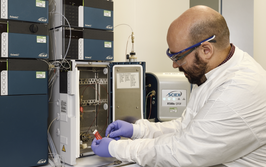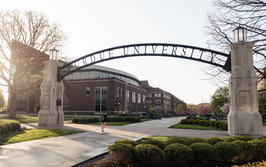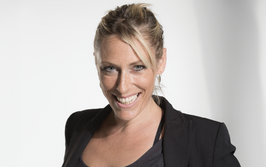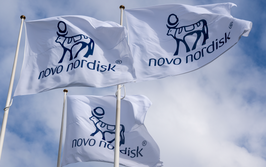The Best Defense Is Good Science
Starting from fundamental virology, Kevin Kayser and the upstream R&D team at Merck discovered the mechanism by which Minute Virus of Mice (MVM) infects CHO cells, and the respective genes involved in viral uptake.
Before joining Sigma-Aldrich in 2002, Kevin Kayser, now Senior R&D Director at Merck (known as MilliporeSigma in the US and Canada), worked as a professor and researcher, using gene editing to stabilize proteins in industrial microbial systems. He applied those skills to the fundamentals of viral infection at Sigma-Aldrich, which was acquired by Merck KGaA in 2015. Their aim was to genetically engineer a line of CHO cells that would be immune to Minute Virus of Mice (MVM) – and they didn’t know whether his goal was remotely feasible. The work culminated in Centinel, described as “intelligent virus defense”.
Centinel is a gene-editing technology that can make CHO cell lines completely resistant to MVM. Centinel claimed the top spot in The Medicine Maker 2016 Innovation Awards. Here, Kayser talks us through the development process, and why insurance against MVM contamination is so important.
Why is MVM such a big problem for the industry?
Going back to the early 1990s, Genentech had a contamination event with MVM which cost them in the region of $10 million. However, the real impact of a viral contamination event in biomanufacturing was witnessed during the Vesivirus 2117 contamination at the Genzyme facilities in 2009. The contamination disrupted patient drug supply, facilities had to be shut down, and the stock price plummeted. The impact on the business as a whole was tremendous. These types of contamination events are quite rare, but can be catastrophic when they occur.
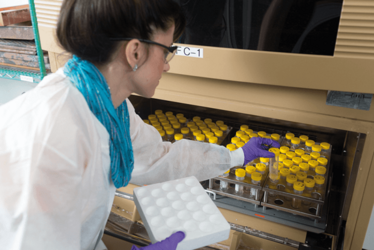
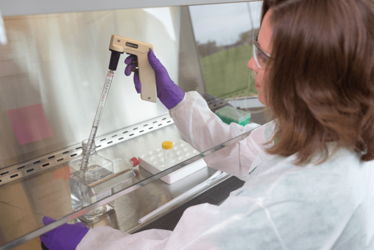
Today, cell culture media comprise dozens of different components, each coming from different suppliers, often from all over the world. MVM is a parvovirus. Parvoviruses are quite common (and most frequently studied) in domestic animals; usually found in animal feces and urine. Typically, the virus enters our industry through raw materials, such as wheat hydrolysates; wheat fields can contain potentially infected field mice, and infected mice can also get into warehouses. In other words, when you’re procuring from a wide variety of sources, contamination is a possibility. For this reason, critical review of vendor supply management is crucial.
As far as I know, MVM is the only virus that has been associated with chemically defined cell culture media – most contamination events come from serum and more complex raw materials. MVM is extremely durable and virulent, which means just a few viral particles in the environment can have fairly significant implications. Genentech revealed that one virus particle per liter of cell culture was enough to infect the entire process.
How did the Centinel project get started?
The project was the brainchild of David Onions (now Director of Orsus Medical) and me. We thought that it would be great to genetically engineer cell lines that were resistant to common viral contamination events. At the time, however, we knew nothing about how the viruses actually infected these particular cell lines. Our team spent a lot of time delving into the fundamental science of MVM infection, which was rewarding because in industry you don’t often get the chance to put on your academic hat to do basic research. When we started, we had no idea if we would ultimately end up with a commercial product. It was possible that the processes involved in MVM viral binding and uptake would be core to the biology of the cell line, making it impossible to knock-out the relevant genes. We didn’t know whether we would be able to find the receptor and characterize the binding event. It was pure exploratory research and very exciting.
Genetic Code Breaking
By Kevin Kayser
I’ve been involved in gene editing for most of my career. When I started, we were using microbial systems, and eukaryotic gene editing was the holy grail of the early 2000s. In 2007, I edited a book that chronicled where gene editing was at the time – and the major techniques used today, such as CRISPR-Cas9 or zinc finger nucleases (ZFNs), weren’t even mentioned! CRISPR-Cas9 has placed gene editing in the spotlight, but for our purposes zinc fingers are preferred. You need a lot of skill to design zinc fingers, and they can provide greater specificity and precision, with little or no off-target effects – we are always concerned about introducing additional modifications that might affect the CHO cell line. If we’re doing research into how a mechanism works, we’ll use CRISPR-Cas9, but in the final product development we use ZFNs.
There are, of course, some legitimate concerns with gene editing. I recently read about a self-titled “biohacker” who was injecting himself with CRISPR-Cas9 in an attempt to build better muscles! Clearly, there are issues around who should have access to the technology and what they should be allowed to do with it, but gene editing most definitely has a tremendous amount of potential. I believe that it should be possible to create a “super” CHO cell line with a variety of traits that would allow it to produce safer and more efficacious drugs. Today, we are already seeing new cell lines being developed with reduced host cell proteins, better glycosylation patterns, faster growing rates, and so on.
As well as performing gene knock-outs, it’s also possible to do knock-ins to turn up the expression of genes or endogenous proteins, or to create new therapeutic variants. There is also the potential to introduce more human characteristics to the cell line to reduce the chances of immunogenicity. These are the likely routes forward.
When did you know the project was feasible?
It was actually serendipitous. As part of a separate project, the team created a series of gene knock outs within the CHO cell line to understand glycosylation patterns. Glycosylation can impact the efficacy of the therapeutic protein in human patients. So, in our efforts to modify the sugar structures on the therapeutics, the team engineered a series of glycosylation mutants using our zinc finger nuclease (ZFN) gene editing technology. It just so happened that some of the mutants resulted in modifications in the binding receptor for MVM, which led to the discovery that the virus attached to the membrane associated protein via a specific sugar. When we screened our already existing library, we found some mutants that were resistant, or partially resistant, to MVM infections. When we witnessed our “infected” cell lines growing, and saw that the virus couldn’t dock, we knew that we had cracked it.
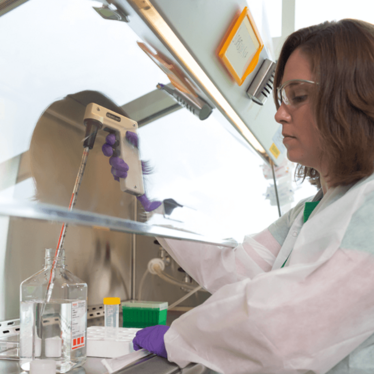
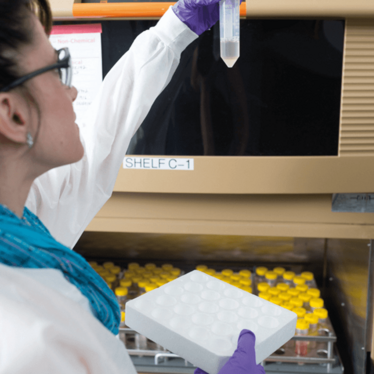
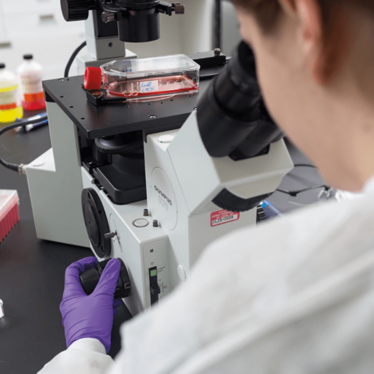
How has the industry reacted?
Centinel basically acts as an insurance policy. Although there are various methods of limiting your risk of viral contamination – testing, filtration, bio-clearance studies, and so on – there isn’t anything else on the market that can guarantee protection. All it takes is for a single virus particle to make it into the production process and the entire production run is compromised.
For this reason, the industry has reacted very positively. We have a number of industrial partners working with us, including Genentech. It was great to see one of the first companies to publically disclose a contamination event jumping in right away to partner with us, which affirmed that this is a genuinely desired product.
Most of our partners tend to be larger organizations – and I think that’s likely down to the fact that they manufacture larger volumes of drugs; the larger the bioreactor, the greater the risk. Smaller organizations tend not to have experienced a contamination event, and I get the impression that some believe, “It will never happen to me.” And of course there are cost pressures for smaller companies.
How will you be expanding the product in the future?
MVM was a logical first choice. Other viruses can be associated with serum and more complex raw materials, but MVM is the only one to be associated with chemically defined processes. However, we are continuing to expand the program in several areas. I don’t think there will be further “product launches” akin to a catalog item. Rather, we’re focusing on custom-made solutions for our clients; if a client has a particular virus they’re concerned with, we will work with them to build a program. If major contamination events with new or unknown viruses occur then we will of course explore those.
What other projects are you working on?
It was only a few years ago that the CHO genome was sequenced and we are actually sequencing our own cell lines right now. We are experimenting with removing parts of the genome that aren’t needed for the cell to produce therapeutics, which could potentially divert more energy to therapeutic protein expression. We can also remove the retroviral scars that have been accumulating in the genomes of all organisms. Once we have done that, we may be able to expand into adjacent industries, like vaccine production.
Kevin Kayser is Senior Director, Head of Upstream R&D, at MilliporeSigma.

